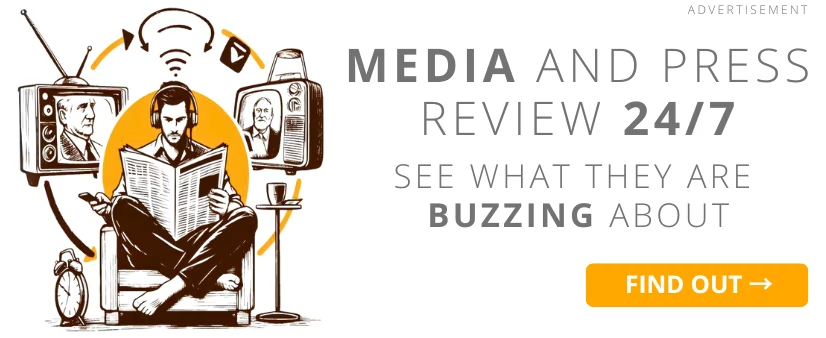There are undoubtedly other examples. Moreover, media can select which facts to present and control the access of specific political options to mass audiences. Thus, as Castells writes, to appear in the media, one must begin speaking the language of media - a particular jargon, a distinct dialect. The question of opinions ceases to matter, as everything is reduced to the simplest and strongest media messages - images. According to Castells, the simplest image is the face. So, we see a contest of personalities where opinions no longer matter because we vote on a like-or-dislike basis, with TV channels subtly telling us whom to like by selectively choosing messages and shaping the context in which a politician appears (see Telewizja Trwam or TVN 24, among others).
This is where mass self-communication enters the picture. As Castells writes: "Over a billion people worldwide use the internet, and nearly two billion use mobile phones. Two-thirds of the Earth`s population can communicate through mobile phones, even in places without electricity or landlines. The explosion of new forms of communication happened almost instantly. People introduced their own systems: SMS, blogs, Skype. P2P, or Peer-to-Peer, allows for sharing all kinds of digital data."
With new tools that allow us to communicate freely on a global scale, we can pressure politicians, publish our critical voices, and finally feel that we are the media. Social movements coordinated and spread through new technologies are described by Howard Rheingold in "Smart Mobs." Castells adds examples like the communication of alter-globalists, who, through the Indymedia network and other channels, reached mainstream media. He also mentions the demonstrations in Spain following the Madrid attacks, which successfully changed the government and its policy toward Iraq.
Examples can also be found in Ukraine and the Paris riots. At last, we can act politically outside the mainstream, beyond the narrow options presented to us. We can express dissent, construct our own solutions to problems, without joining political parties accepted and invited to televised programs. We can also better organize our actions and have real, lively discussions outside the rigid frameworks we’ve been trained to accept.
Thanks to new media and communication channels, a true civil society is emerging - a concept I once eagerly discussed under the term "blogalization" (mocked by some), which was meant to counter Bauman`s negative portrayal of globalization. Mass Self Communication is a broader term, more complete and more clearly explaining these new possibilities. To conclude emphatically, I’ll use Castells’ own words:
"In times when formal, rigid democracy is in serious crisis, when citizens have lost faith in democratic institutions, what we are witnessing with the explosion of Mass Self Communication seems to be the birth of new political forms. Although it’s too early to say what they will look like, one thing is certain: in the field of communication, a struggle will unfold that will reveal a new diversity of technological means. Essentially, it is the same struggle that has existed since the dawn of humanity. It has always been about freeing our minds."
***
Source: hiperblog.blogspot.com, September 14, 2006
Creative Commons License: Attribution 2.0 Poland
COMMERCIAL BREAK
New articles in section Media industry
Journalism in the age of AI. Why people prefer humans over machines
Krzysztof Fiedorek
Only 12% of people accept news created solely by AI, while 62% prefer those written by humans. At the same time, only 19% notice labels indicating the use of artificial intelligence, while younger audiences ask AI to explain the content to them. These are the findings of the Reuters Institute report on artificial intelligence in media.
Why do we believe fakes? Science reveals the psychology of virals
KFi
Why do emotions grab more attention than evidence, and why can a fake authority overshadow scientific data? Researchers from Warsaw University of Technology, Jagiellonian University, and SWPS University in Poland sought the answers. Here are their findings.
Investigative journalism in Europe. Newsrooms face pressure
KFi, Newseria
Media and political representatives point to the difficult situation of investigative journalism in Europe. Newsrooms are reluctant to invest in this segment due to high costs and the large amount of time and effort required. Most of all, however, they fear legal proceedings.
See articles on a similar topic:
Most medical influencer posts on TikTok are FALSE
KFi
Researchers from East Carolina University Health Medical Center analysed 120 TikTok videos tagged with hashtags such as #naturalparenting, #antivaccine, and #holistichealth. The results of their study leave no doubt.
Global Media Under Scrutiny. Reuters Institute Digital News Report 2024
Krzysztof Fiedorek
The “Digital News Report 2024,” developed by the Reuters Institute for the Study of Journalism, describes the landscape of digital news media based on data from 47 markets, representing more than half of the world’s population.
Trends in Media and Entertainment. DataArt Predictions for 2019
KF
Increasing consumption of content on mobile devices, growing demand for on-demand services, and the rapid development of user-generated content are the trends expected to dominate the tech sector in 2019, according to DataArt, a global technology consulting firm.
Business Communication and 25 Years of PR Evolution. ITBC Report
KFi
How has technology transformed the way companies communicate with clients? What connects speed of response, creativity, and crisis resilience? The ITBC Communication report reveals how communication has evolved over the past 25 years and what defines the future of business relationships.






























